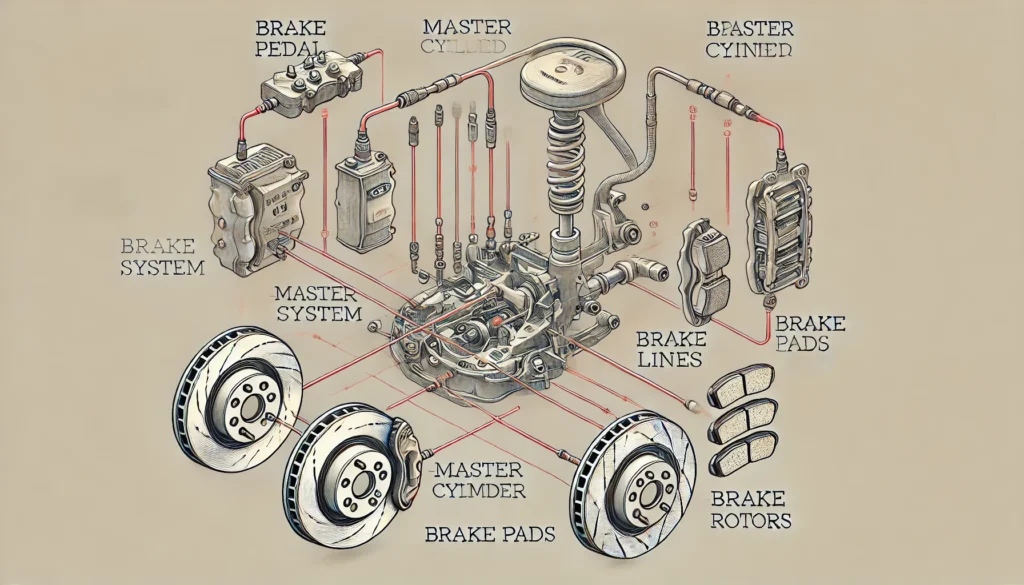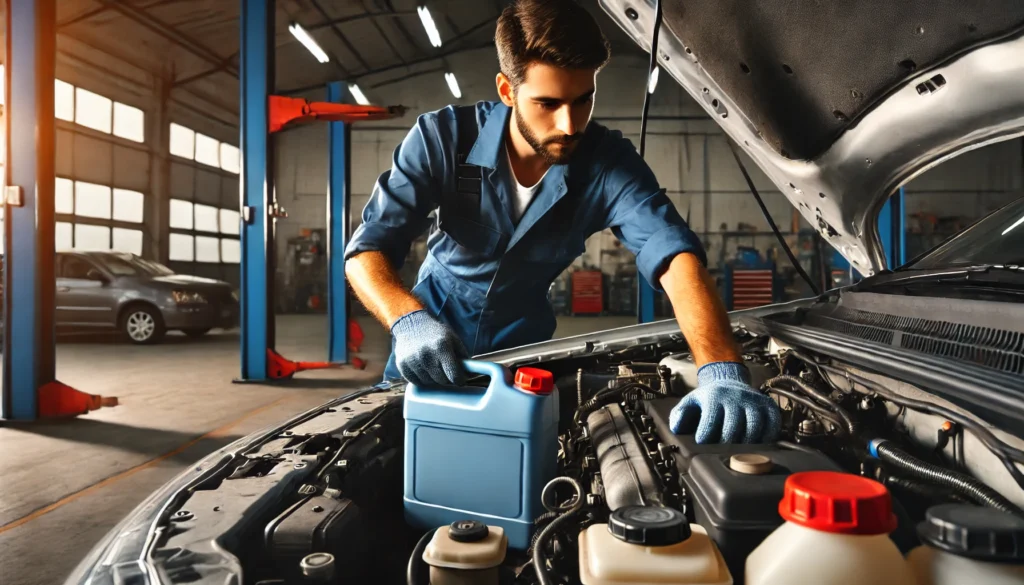The brake system is one of the most critical components of any vehicle, ensuring the safety of the driver, passengers, and others on the road. When a brake system fault occurs, it’s essential to diagnose and repair it promptly to maintain optimal performance and safety. Understanding which parts might need to be replaced or repaired can help you manage the situation effectively and ensure your vehicle remains safe to drive.
Key Components of the Brake System
The brake system is composed of several key components that work together to slow down and stop the vehicle:
- Brake Pedal: The driver applies force to this to initiate braking.
- Master Cylinder: Converts mechanical pressure from the brake pedal into hydraulic pressure.
- Brake Lines and Hoses: Transmit the hydraulic fluid to the brake calipers.
- Brake Calipers: House the brake pads and use hydraulic pressure to press the pads against the rotors.
- Brake Pads: Create friction against the rotors to slow down the vehicle.
- Brake Rotors (Discs): Rotating discs that the pads clamp onto to create friction.

Common Brake System Faults and Repairs
- Worn Brake Pads:
- Cause: Brake pads wear out over time due to friction.
- Symptoms: Squeaking or grinding noise when braking, reduced braking efficiency.
- Repair: Replace the brake pads. This typically costs between $100 and $300 per axle, including parts and labor.
- Damaged Brake Rotors:
- Cause: Rotors can become warped, cracked, or grooved.
- Symptoms: Vibration or pulsation when braking, reduced braking efficiency.
- Repair: Resurface or replace the rotors. Resurfacing costs around $100 to $200, while replacing them can range from $200 to $400 per axle.
- Brake Fluid Leak:
- Cause: Leaks in brake lines, hoses, or calipers.
- Symptoms: Low brake fluid level, spongy brake pedal, reduced braking power.
- Repair: Repair or replace the leaking component. Costs can range from $150 to $600, depending on the location and severity of the leak.
- Faulty Master Cylinder:
- Cause: The master cylinder can wear out or fail over time.
- Symptoms: Soft or sinking brake pedal, reduced braking power.
- Repair: Replace the master cylinder. This repair typically costs between $300 and $500.
- Air in the Brake Lines:
- Cause: Air can enter the brake lines during repairs or if there is a leak.
- Symptoms: Spongy brake pedal, reduced braking efficiency.
- Repair: Bleed the brakes to remove the air. This procedure usually costs around $100 to $150.
- Worn Brake Calipers:
- Cause: Calipers can become worn or stuck due to corrosion or mechanical failure.
- Symptoms: Uneven braking, dragging brakes.
- Repair: Replace the brake calipers. This typically costs between $200 and $400 per caliper, including parts and labor.

Diagnosing Brake System Faults
To accurately diagnose a brake system fault, follow these steps:
- Visual Inspection:
- Check the brake pads, rotors, calipers, and brake lines for any visible signs of wear or damage.
- Brake Fluid Check:
- Inspect the brake fluid level and look for any signs of leaks.
- Brake Pedal Test:
- Press the brake pedal and observe its feel. A spongy or soft pedal can indicate air in the brake lines or a problem with the master cylinder.
- Listen for Noises:
- Pay attention to any unusual sounds when braking, such as squeaking, grinding, or clicking.
- Use Diagnostic Tools:
- Use an OBD-II scanner to read any error codes related to the brake system.
Importance of Professional Assistance
While some brake repairs can be performed at home, others require professional expertise. Complex issues, such as replacing the master cylinder or dealing with extensive brake line repairs, should be handled by certified mechanics to ensure safety and effectiveness.
Conclusion
Addressing brake system faults promptly is crucial for vehicle safety and performance. Common repairs include replacing worn brake pads, resurfacing or replacing rotors, repairing brake fluid leaks, and bleeding the brake lines. By understanding which parts need attention and seeking professional assistance when necessary, you can ensure your brake system functions correctly, keeping you and your passengers safe on the road.